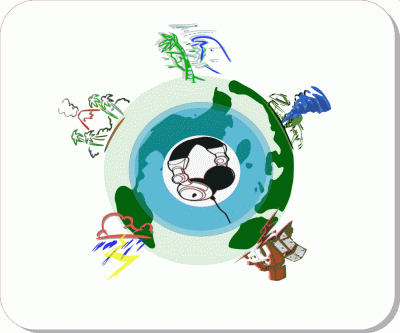Sounds in the Atmosphere
Sounds in the Atmosphere
CHEUNG Ping

There are many kinds of sound in the atmosphere: rain drops falling on the ground, the wind howling, and the familiar sound of thunder associated with lightning.
Because temperature and wind greatly influence the spread of sound in the air, they produce interesting effects similar to the optical phenomenon of mirage. Through analysis of the sonic signal, we can therefore estimate the atmospheric conditions such as the temperature and/or the wind distribution aloft.
Beside the sound we encounter everyday, there are other sounds in the atmosphere. Humans can hear sounds from 20 Hz to 20,000 Hz. Those below 20 Hz, which we call infra-sound, are inaudible. Because weather systems are generally large in size, many of them generate infra-sound. Atmospheric acoustics is the study of propagation of sound waves in the atmosphere. Listed in it is the study of infra-sonics, which focuses on inaudible, low-frequency sounds.
Even before World War I, the detection of infra-sound had been employed in locating strong explosions. It was a hot topic during the cold war period to monitor nuclear tests in the atmosphere. The "Comprehensive Nuclear Test Ban Treaty" required that a global network of infra-sound sensors be installed to monitor abnormal explosions in the air. It was because of the detection network that scientists found out that the nature is full of infra-sounds. Apart from well-known sources like earthquake, tsunami, volcano eruption, many weather systems including typhoon, thunderstorm, tornado, and even clear air turbulence also produce infra-sound.
The wave length of infra-sound is quite long: typical infra-sound from the eye of a typhoon has a 4 to 8 second cycle (0.25 to 0.125 Hz), meaning that its wavelength is a few kilo-metres long! One of the interesting properties of infra-sound is that it can travel a long distance in the air without much decay. This enables continuous monitoring of the atmosphere on a large scale. When combined with other remote sensing data, it can provide additional information regarding the atmospheric structure. Know the various hazardous weather systems by their infra-sonic properties will help understand their behaviour and make better forecast. This has recently become an important topic in the study of infra-sonics.